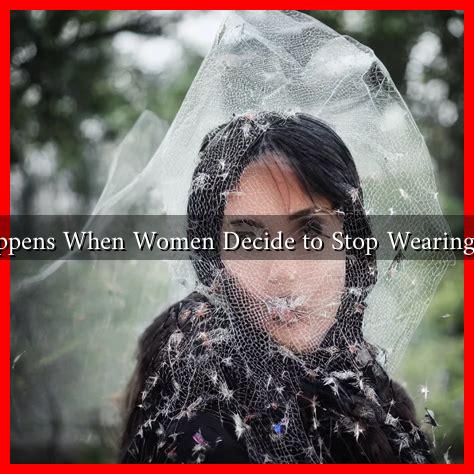-
Table of Contents
What Happens When Women Decide to Stop Wearing the Veil?
The decision for women to stop wearing the veil is a complex and multifaceted issue that intersects with cultural, religious, and personal identity. In many societies, the veil is not just a piece of clothing; it symbolizes a woman’s faith, cultural heritage, and sometimes, her social status. However, when women choose to remove the veil, it can lead to significant changes in their lives and the communities around them. This article explores the implications of this decision, drawing on case studies, statistics, and expert opinions.
The Cultural Context of the Veil
The veil, whether it be the hijab, niqab, or burqa, holds different meanings across various cultures and religions. In Islamic tradition, it is often seen as a sign of modesty and piety. However, the interpretation and significance of the veil can vary widely:
- Religious Significance: For many Muslim women, wearing the veil is a religious obligation that fosters a sense of belonging to their faith.
- Cultural Identity: In some cultures, the veil is a marker of ethnic identity, linking women to their heritage.
- Political Symbolism: In certain contexts, the veil can also represent resistance against Westernization or colonialism.
Reasons for Removing the Veil
Women may choose to stop wearing the veil for various reasons, including:
- Personal Choice: Many women assert their autonomy by deciding how they wish to express their identity.
- Social Pressure: In some cases, women may feel pressured by societal norms or peer influence to conform to a different standard of appearance.
- Changing Beliefs: A shift in personal beliefs or interpretations of religious texts can lead to the decision to remove the veil.
- Practical Considerations: In certain environments, such as workplaces or educational institutions, women may find it easier to navigate their roles without the veil.
Case Studies: Women Who Have Removed the Veil
Several notable case studies illustrate the diverse experiences of women who have chosen to stop wearing the veil:
- Malala Yousafzai: The Nobel laureate and education activist has spoken about her decision to wear the hijab as a symbol of her identity, but she also emphasizes the importance of choice. Her story highlights the need for women to have the freedom to make their own decisions regarding their attire.
- Hala Al-Atrash: A Syrian woman who gained media attention after removing her hijab in a public demonstration. She stated that her decision was a personal one, aimed at reclaiming her identity in a war-torn society.
- Fatima Al-Mansour: A Saudi woman who faced backlash after posting a video of herself without a veil. Her experience underscores the societal pressures and potential repercussions women may face when they choose to defy traditional norms.
Implications of Removing the Veil
The decision to stop wearing the veil can have profound implications for women, both personally and socially:
- Social Repercussions: Women may face criticism or ostracism from their communities, particularly in conservative societies.
- Empowerment: For many, removing the veil can be an empowering act, symbolizing freedom and self-determination.
- Identity Crisis: Some women may experience an identity crisis as they navigate their new appearance and the reactions of those around them.
- Legal and Political Ramifications: In some countries, laws regarding the veil can lead to legal challenges for women who choose to remove it.
Conclusion
The decision for women to stop wearing the veil is deeply personal and can lead to a range of outcomes, from empowerment to social backlash. It is essential to recognize that this choice is not merely about clothing; it reflects broader themes of autonomy, identity, and cultural dynamics. As societies continue to evolve, the conversation surrounding the veil will likely remain a significant aspect of discussions on women’s rights and freedoms. Ultimately, the key takeaway is that every woman’s choice regarding the veil should be respected and understood within her unique context.
For further reading on women’s rights and cultural identity, you can explore resources from organizations like Amnesty International.

